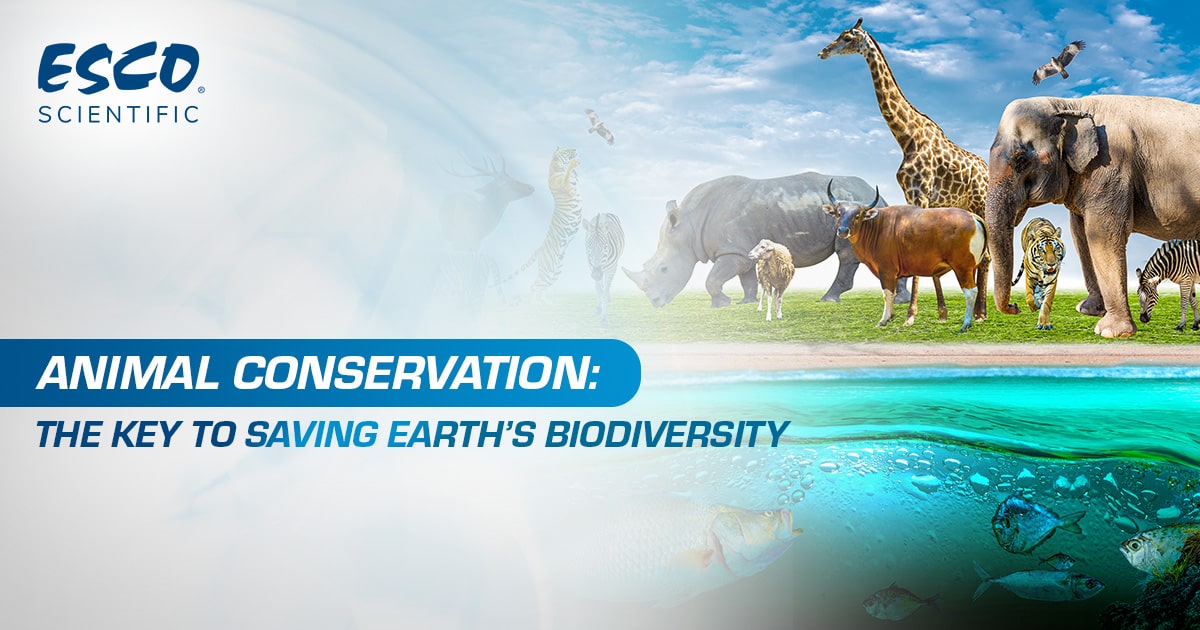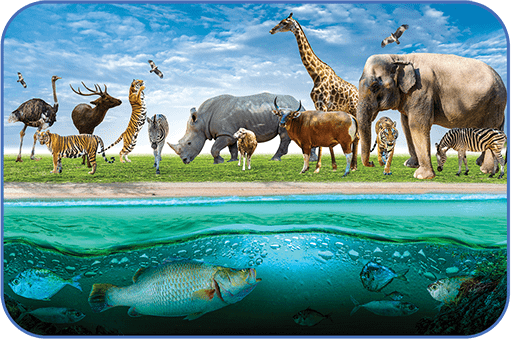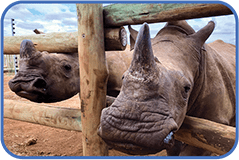Animal Conservation:
The Key to Saving Earth's Biodiversity

Our planet is currently facing an extinction crisis and a rapid decline in animal biodiversity. Its drastic loss is caused by none other than human activities, such as land conversion, overexploitation, and pollution. With or without knowledge of their actions, humans are destroying animals’ natural habitats and resources for livelihood. Agriculture, for example, is a major use of land. According to the data gathered in 2018 by the Food and Agriculture Organization of the United Nations (UN FAO), 1.56 billion hectares of land, which is half of the world’s habitable land, is used for agriculture alone.
Why Is Animal Biodiversity and Its Conservation Important?
Biodiversity refers to the variety of all living organisms in our natural world. A healthy environment and a balanced ecosystem are important to support human life. All direct human benefits that are essential for survival like food, water, and shelter come from nature. World Wildlife Fund’s (WWF) 2020 The Living Plant Report with indicators provided by the Zoological Society of London (ZSL) shows an alarming average drop of 68% in almost 21,000 wildlife populations from 1970 to 2016. The irresponsible consumption and usage of these resources put the planet’s biodiversity at risk of deterioration and loss. This is a clear indication of human altercation effects and a huge signal for humans to act in combating biodiversity loss. To preserve and rebuild biodiversity, analyzing threats and looking for innovative solutions are needed. And this is where animal conservation efforts come into play.

In situ vs. Ex situ Conservation
Conservation methods can be classified into two basic types: in situ and ex situ. Both are significantly different but are complementary solutions to the conservation of biodiversity. In situ conservation utilizes the natural habitat of the species in study, whereas ex situ conservation involves sampling outside of their natural habitats such as zoos, captive breeding facilities, aquariums, gene banks, and laboratories.
Understanding variation of threats is key to improving species recovery. In situ may have been the ideal method as it retains animals’ way of living in their natural environments, but these measures have limitations and are often not enough to study animal species. Hence, making ex situ strategy the forefront of biodiversity conservation as it provides more opportunities to study animal species. Here are the advantages of ex situ conservation:
- Longer lifetime and breeding activity
- Genetic techniques can be used
- Captivity breeds can be reintroduced in the wild
Types of Ex situ Conservation

Zoo. Animals are managed in enclosures or open areas. Zoological parks are usually available for public display where endangered animal species may also breed to increase their numbers. Not only do people enjoy them, but it also serves as a source of information for education and research purposes.

Captive Breeding. Samples of animal species are captured in the wild especially those with vulnerable and threatened populations. It is an intensive management with improved enclosure design under expert care. The goal is to ensure survival of the species against extinction.

Aquarium. It is a vivarium in which water-dwelling animals are kept. Marine species are often victims of overexploitation by humans. Freshwater habitats are also the target of damming, resulting in fish species degradation.

Gene Bank. Gene study is vital to understanding pathology and molecular genetics of a species. Genome resources can be preserved short-term or long-term through cryopreservation that stores material at -196°C or freeze drying.
Integration of Engineering Control Equipment in Animal Conservation
Animal Research Workstations play an important role in animal behavioral studies and animal breeding for biodiversity enrichment. They provide operator, animal, and environmental protection during research. These workstations protect the operator from exposure to allergens and other potentially hazardous materials, as well as the animals inside the enclosure from exposure to airborne particulates.
Earth’s biodiversity is extremely important to human lives and the health of natural systems. Hence, it is only fair that humans take forward and seek nature’s welfare for their own before it is too late.
Read more: The Lab Cycle: Esco Scientific Quarterly Newsletter - Issue 9, Apr – Jun 2022, Selecting the Right Animal Research Workstation
References:
[1.] H. Ritchi and M. Roser. (2013). Land Use. https://ourworldindata.org/land-use.
[2.] I. Jaisankar et al. 2018. Biodiversity and Climate Change Adaptation in Tropical Islands. https://www.sciencedirect.com/topics/agricultural-and-biological-sciences/ex-situ-conservation.
[3.] M. Kasso and M. Balakrishnan. (2013). Ex Situ Conservation of Biodiversity with Particular Emphasis to Ethiopia. https://www.hindawi.com/journals/isrn/2013/985037/.
[4.] World Wildlife Fund. (n.d.). What is biodiversity. https://www.worldwildlife.org/pages/what-is-biodiversity.


